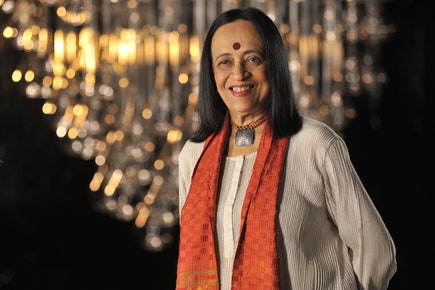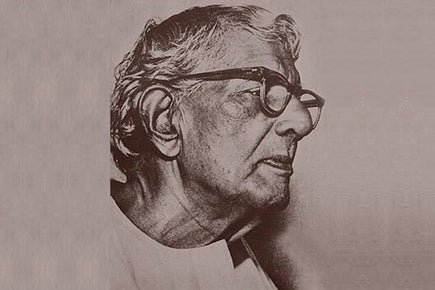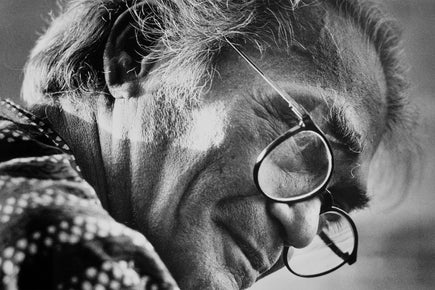10 Most Iconic Photographs of the 20th Century From Around the World
The origins of photography, as we know it today, can be traced back to the late 1830s in France, when inventor Joseph Nicéphore Niépce captured the first ever permanent recorded image – a crude shot of the view from his studio’s window in France. The ground-breaking work paved the way for the tremendous development of photography, from just a simple box that took blurry photos to high-tech DSLRs and smartphone cameras. While photographs open up varied perspectives of looking at the world, many of the most powerful and iconic shots document, influence and alter world history itself. Here is our list of 10 of the most iconic photographs of the 20th century:
1. Gandhi and the Spinning Wheel by Margaret Bourke-White, 1946
 Photo Credit: Margaret Bourke-White/100photos.time.com
Photo Credit: Margaret Bourke-White/100photos.time.com
This iconic image was captured in 1946, when LIFE magazine’s first female photographer, Margaret Bourke-White was in India to cover the nation’s impending independence. Before shooting what would become Gandhi’s most defining portrait, Bourke-White had to face an interesting challenge – if she were to photograph Gandhi at the spinning wheel, she had to learn how to use one herself. Not ready to give up on the rare photo opportunity, Bourke-White learnt how to use the wheel, and went on to capture Gandhi’s most enduring image. One of the most influential figures of the 20th century, Gandhi was the face of saintly peace, with the charkha or spinning wheel symbolising India’s struggle for independence.
2. Starving Child and Vulture by Kevin Carter, 1993
 Photo Credit: Kevin Carter/100photos.time.com
Photo Credit: Kevin Carter/100photos.time.com
One of the most haunting photographs in history, this image was captured by South African photojournalist Kevin Carter, when he travelled to Sudan to photograph the famine in 1993. The photograph earned Carter worldwide attention and criticism, raising questions on why he didn’t carry the toddler to the nearby feeding centre that he claimed to have phoned. Media reports later clarified that the child had reached the feeding centre, but died a few days later from malarial fever. The onslaught distressed Carter, who expressed his remorse even when he won the Pulitzer Prize for the image, which continues to be seen as a metaphor for Africa’s despair.
3. The Terror of War by Nick Ut, 1972
 Photo Credit: Nick Ut/AP
Photo Credit: Nick Ut/AP
Captured on June 8, 1972, by Associated Press photographer Nick Ut, this famous photograph presents the stark and harrowing reality of innocent victims of war. The Pulitzer Prize-winning image shows Vietnamese children running, injured from a napalm attack during the Vietnam War. The image was controversial for its full-frontal nudity, but many newspapers relaxed their policies on nudity to spread the anti-war image. At the centre of the photo is nine-year-old Kim Phuc, who ripped off her burning clothes while running. Nick Ut took the children to a hospital after photographing them, thereby saving their lives.
4. V-J Day in Times Square by Alfred Eisenstaedt, 1945
 Photo Credit: Alfred Eisenstaedt/artsy.net
Photo Credit: Alfred Eisenstaedt/artsy.net
The most reproduced image of the 20th century, Alfred Eisenstaedt beautifully captured a moment that poetically showcases human emotions of joy, wonder and anguish, on the streets of New York, when the World War II came to an end on August 14, 1945. In one of the most defining moments of history, a sailor can be seen swooping up a dental nurse and kissing her – it was later known that the nurse was taken completely by surprise by the stranger in what could have been a serious case of sexual assault. Nevertheless, Eisenstaedt’s depiction of the moment encapsulates the joy and relief that comes with the end to long years of war.
5. Migrant Mother by Dorothea Lange, 1936
 Photo Credit: Dorothea Lange/100photos.time.com
Photo Credit: Dorothea Lange/100photos.time.com
The photograph that came to define the Great Depression of the 1930s, this intimate shot of Florence Owens Thompson with her children, was captured by Dorothea Lange in 1936. Lange was capturing pictures of migrant farm workers for the Resettlement Administration, when she came across the woman, who is now popularly known as the “Migrant Mother.” Her features marked with worry and resignation, the pea picker became the face of suffering in the United States during the Depression, and a symbol of the strength of motherhood.
6. Tank Man by Stuart Franklin, 1989
 Photo Credit: Stuart Franklin/magnumphotos.com
Photo Credit: Stuart Franklin/magnumphotos.com
In one of the strongest statements of dissent, an unidentified Chinese man stood in front of a column of tanks on June 5th, 1989 – the morning after the Chinese military had suppressed the Tiananmen Square protests. The crackdown had resulted in the deaths of hundreds of student demonstrators in Beijing. Captured by at least five famous photographers including Stuart Franklin, the image became a symbol of resistance in the face of oppression. Franklin won the World Press Photo Award for Spot News for the image, which still faces heavy censorship in China.
7. Behind the Gare Saint-Lazare by Henri Cartier-Bresson, 1932
 Photo Credit: Henri Cartier-Bresson/artsy.net
Photo Credit: Henri Cartier-Bresson/artsy.net
Often referred to as the father of modern photojournalism and a master of street photography, Henri Cartier-Bresson’s skilful images are marked by his speed and instinct. The perfect exemplification of the two combined, can be seen in his famous photograph, Behind the Gare Saint-Lazare. Bresson captured a man leaping across a puddle of water, through a fence behind the Saint-Lazare train station in Paris, in 1932. The photograph came to be known as the perfect illustration of the “decisive moment,” when a photographer captures a fleeting moment.
8. Portrait of Winston Churchill by Yousuf Karsh, 1941
 Photo Credit: Yousuf Karsh/karsh.org
Photo Credit: Yousuf Karsh/karsh.org
Following the attack on Pearl Harbour, former UK Prime Minister Winston Churchill had arrived in Ottawa, Canada, in 1941, to thank the allies for their assistance. Photographing the politician on the occasion, Yousuf Karsh took away Churchill’s cigar from his mouth, which resulted in the political leader scowling at the camera. This gave Karsh his iconic shot, which would become one of the most widely reproduced photos and a landmark in the art of political portraiture. The image gave modern photographers the freedom to click honest, and even critical photos of politicians. “You can even make a roaring lion stand still to be photographed,” Churchill told Karsh, after the photograph was taken.
9. Guerrillero Heroico by Alberto Korda, 1960
 Photo Credit: Alberto Korda/Wikimedia Commons
Photo Credit: Alberto Korda/Wikimedia Commons
Photographer Alberto Korda captured this iconic image of Cuban revolutionary Che Guevara at a memorial service that was held for victims of the La Coubre explosion in Havana, Cuba, in 1960. The image, widely circulated ever since Guevara’s death (he was killed seven years later leading a guerrilla movement in Bolivia) is one of the most easily recognized images of all time, and an enduring symbol of revolution, rebellion and resistance.
10. Raising the Flag on Iwo Jima by Joe Rosenthal, 1945
 Photo Credit: Joe Rosenthal/100photos.time.com
Photo Credit: Joe Rosenthal/100photos.time.com
Captured by Joe Rosenthal on February 23rd, 1945, this iconic photograph depicts U.S. troops raising a flag in the Japanese island and military base, Iwo Jima, during World War II. The photograph earned Rosenthal a Pulitzer Prize and is one of the most recognized images, till date. While the photographer was suspected to have staged the patriotic scene, it was later reported as a genuine event that took place.
By freezing some crucial, historical moments in time, these photographs have altered the course of history and expanded viewers’ awareness and understanding of the world. Calling attention to numerous important causes and events through stirring images, they have proved the age-old adage – a picture is indeed, worth a thousand words.

























































































